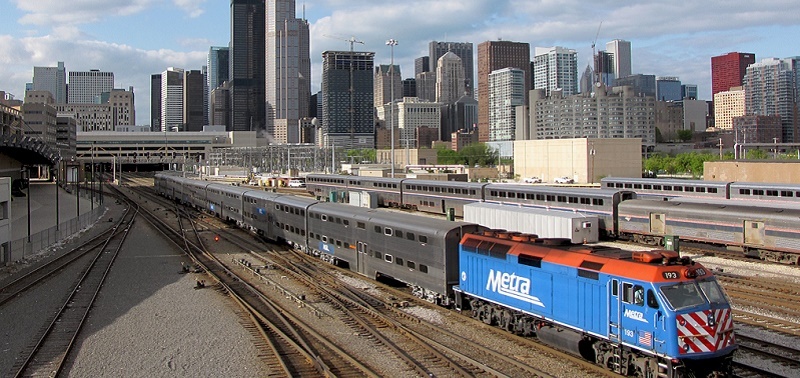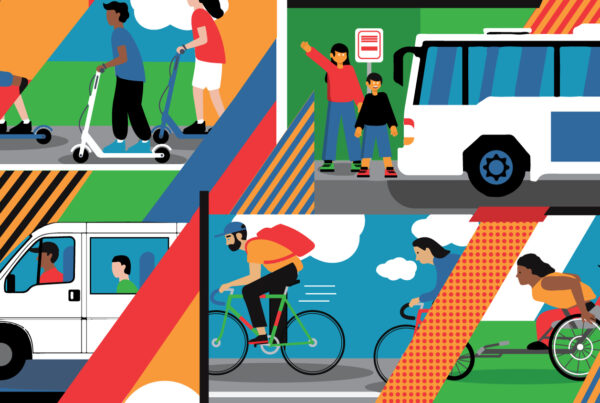The RTA is pleased to be on the Host Committee for the Shared-Use Mobility Center’s National Shared Mobility Summit, taking place here in Chicago October 17-19. This unique opportunity will bring together leaders and visionaries from the public and private sectors to discuss the latest policy innovations, on-the-ground experiments, and research from around the world relating to shared mobility.
It’s an exciting time to be in the business of moving people and we will see you at the summit to talk about the future of mobility in Chicago!
So, what exactly is shared mobility? It’s a new way of thinking about how we all get around. In just five years transportation in our region has changed more than it has in decades. More and more, regional residents are making their daily transportation decisions from a “buffet” of transit choices, instead of ordering a “main course” of a ride on Metra or CTA.
The decisions can change every day. Do you have an appetite for a “traditional” drive to the train station or would you rather call a ridesourcing service to the station? Certainly today, that ridesourcing service will have someone at the wheel. Would you believe that some predict that in another five years, that car may be autonomous and you’ll be the only human in the car?
Metra reverse commuters continue to hop aboard a Pace Shuttle Bug for direct connections to employers in a transit-specific public private partnership. Chicagoans are biking more than ever and connecting to public transit using the Divvy bikeshare network. Car owners are sharing their vehicles on peer-to-peer exchanges in low-income neighborhoods, helping non-owners find a car when they really need one. And ridesourcing options are expanding, meeting the desire for added convenience and flexibility and helping bridge the “first/last mile” to transit.
Earlier this year, Metra announced a first-time, all-inclusive partnership to help address the first/last mile challenge, looking for a ride share marketing partner. The last five years have seen significant transportation innovation, but it is the coming years we are focused on at the RTA, as they will be transformational – they need to be!
Some fear these advances will hurt public transportation. But, at least one study shows this is not so. One of this study’s key findings is that the more people use shared modes, the more likely they are to use public transit, own fewer cars, and spend less on transportation overall. And, the study found that shared modes complement public transit, enhancing urban mobility.
Our region is no stranger to shared mobility. Pace’s Vanpool program is one of the largest in the country, giving coworkers access to a van that can be used for shared rides to locations hard to reach on the fixed-route network. The number of Pace Call-N-Ride zones is growing, allowing more regional residents to pick up a phone and get a shared curb-to-curb ride at an affordable rate. And, Pace ADA Paratransit is heavily utilized; ridership has doubled over the past decade, providing shared-use services for those with mobility challenges.
The RTA believes our region’s transit system is the backbone of a growing shared-use ecosystem. If we hope to encourage greater use of shared transportation over personal vehicle ownership and use, we need to be innovative, adaptable, and efficient. We need to think about the backbone as a central collector and how to make the connections between mass transit and other modes more seamless. We need to be open to ideas that inspire more of the region’s residents to become shared mobility users. We need to pursue policies like transit-oriented development that put people and jobs closer to efficient shared-use transportation. And, we need to be proactive in creating the partnerships that make it all happen, with the goal of improved mobility for all.
We look forward to seeing you at the summit later this month to discuss shared mobility now and in the future. Ride On.
Cross-posted from the RTA’s Ride On blog. Image credit: Wikimedia.


